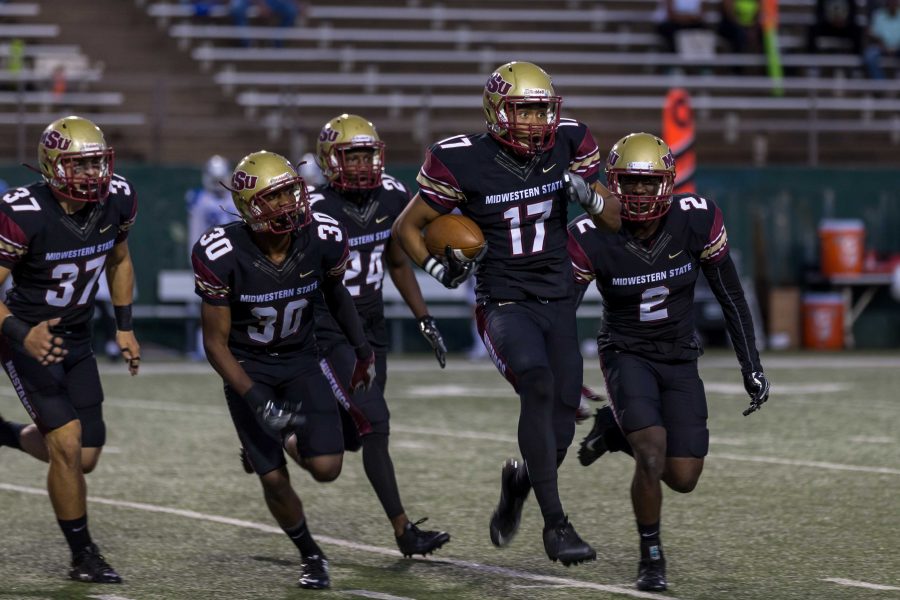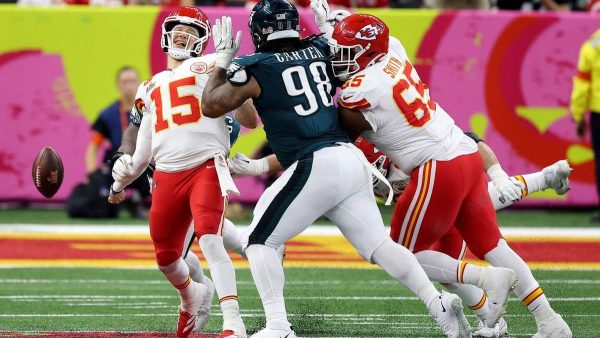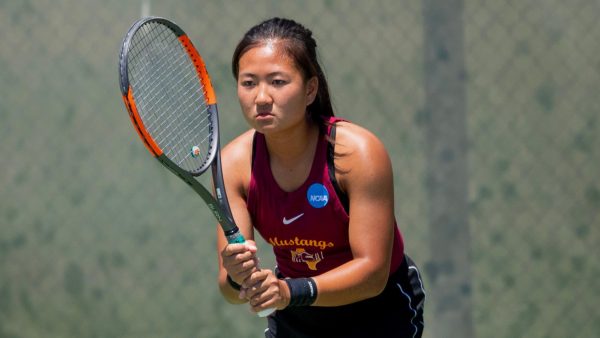Robert Grays’ death affected team “more so positive than in a negative way”
DaMarcus Wilson, nursing freshman, celebrating his interception during the football game against Angelo State on Oct. 15. Photo by Izziel Latour
After a win of 35-13 win over Texas A&M-Kingsville, a football player typically celebrates, prepares for next week’s game and for things to move on normally. With about 3:24 in the final quarter, cornerback Robert Grays sustained a neck injury on Saturday, Sept. 16. That following Monday, there was a community gathering in support of Grays with 700 in attendance. Afterwards, Grays, business sophomore died on Sept. 19 in Memorial Herman-medical center.
While Kyle Williams, director of athletics, said has had experiences with athletes dying, there has never been an MSU athlete die during an athletic event.
“There was no instructions for something like this,” Williams said. “There’s no directions, there’s no manuals in my drawer that talks about a tragedy like this. This was all new to all of us as a campus and as an athletic department.”
Because of this, the athletic department came to the football players “with arms open” to reassure players that their feelings were valid.
“Whether it was being mad, was it being certainly sad, or just a lot of questions: frustration, confusion. We all were there,” Williams said.
Williams also stated that he is proud of how the coaches, athletic trainers and the campus community has handled this situation.
In Grays’ honor, the department has retired the late cornerback’s jersey and has raised money for a scholarship fund in his name. So far, two gofundme accounts have been created and has raised about $30,000.
Paul Manus, business and marketing sophomore, agrees with Williams.
“When that happened, it took our whole team, it took the breath out of us. It was like a blessing in disguise that we had a by-week the next week to recuperate and go to the funeral.”
Manus stated that through this tragedy- that he considered “an even kill” for the team, they grew closer. Manus made sure to comfort teammates who were deeply affected by Grays’ passing.
“Where I could be stronger to like hold them up and them it’s gonna be okay that having the whole team break out, we all crumble together.”
Because of their strength, Shannon Myart, sports management grad student, and walk-on football player, felt inspired to improve as an athlete.
“They still had to keep going, carry out what it was it was always one objective was to win the lsc championship and then going to the national tournament and go there and win, just succeed just build off of that. For me, seeing that was it made fire within me burn a little bit more, made me want to go out and be more successful, do more, whatever the team was doing, I wanna do that plus another rep of whatever it was that I had to do,” Myart said.
Myart believes that the team despite the team not winning the playoffs, they will continue to be successful.”
“So, I think from now on, from the remaining people that know Rob or knew Rob, for like the next two or three years to come -from freshman on up- they’ll use that as motivation to carry on the tradition of success in the team, it affected them more so positive than in a negative way,” he said.
In February 2017, the National Collegiate Athletic Association issued a student-athlete survey to DII institution to head athletic trainers. Only 75% of the institutions participated in the survey.
Gary Diehm, head athletic trainer stated that while he receives numerous surveys, he responded to it. While the majority of student athletes carry personal insurance, the athletic department will get them a temporary policy. Both Paul Manus and Shannon Myart have health insurance.
“If you get injured, while you’re under-if it’s at an athletic event or something hosted by athletics or something hosted by the strength and conditioning, if you get an injury there, under their care then will take care of it. anything outside of that that’s not athletic related, then you would be responsible for it,” Myart said.
Diehm further explained the procedures for athletes who are injured.
“What we do is take their personal insurance as primary insurance and then we’ll apply their primary insurance and then we have an account here on campus that covers them secondarily, for excess bills that their primary insurance doesn’t pay. It depends on the parent. For example, if my daughter goes to college at midwestern, so we would take all my personal insurance that I have on my kids, that becomes the primary, and the university covers the deductibles and copays from there. We filed with the ncaa catastrophic insurance plan, I actually filed it on Monday after his injury happened on Saturday, and that’ll pay I think it’s $25,000 dollars to the family. Then, the university has an accidental death and dis-membership policy that we have on all of our student athletes as well. So that will go to the family as well,” he said.









